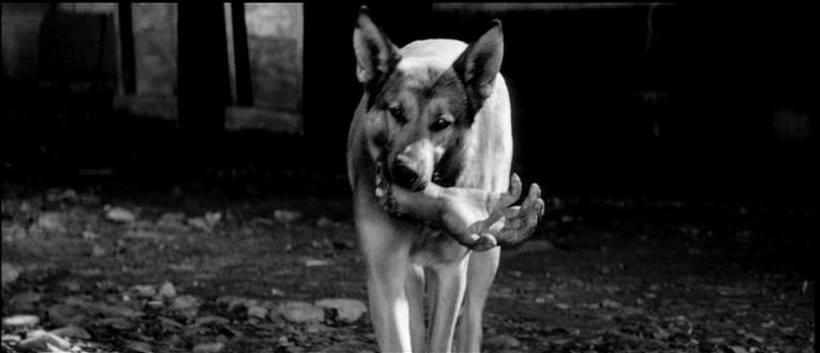Prandente eo quondam canis extrarius e trivio manum humanam intulit mensaeque subiecit.
—Suetonius, Divus Vespasianus 5.4
“Once, while he was having lunch, a stray dog carried in a human hand from the crossroads and threw it under his table.”
This is one of the omens that are supposed to indicate that Vespasian was destined to be emperor (although, as Tacitus remarks in Historiae 1.10 post fortunam credidimus “we believed in [the omens] after his success”).
It’s not intuitively obvious that a dog carrying a human hand is a good portent; it’s used in a (much imitated) scene from Yojimbo to indicate oncoming (or ongoing) disaster.

But there’s a visual pun here, often used in Latin: manus means “hand” (the thing at the end of an arm), but also “band” (of armed men), and “power” (especially the power of legally authorized violence). That’s why you see a hand atop lots of Roman military standards.

I guess my point is: Everything Is Better With Latin!™—even (or especially) including stray dogs and carrion.
